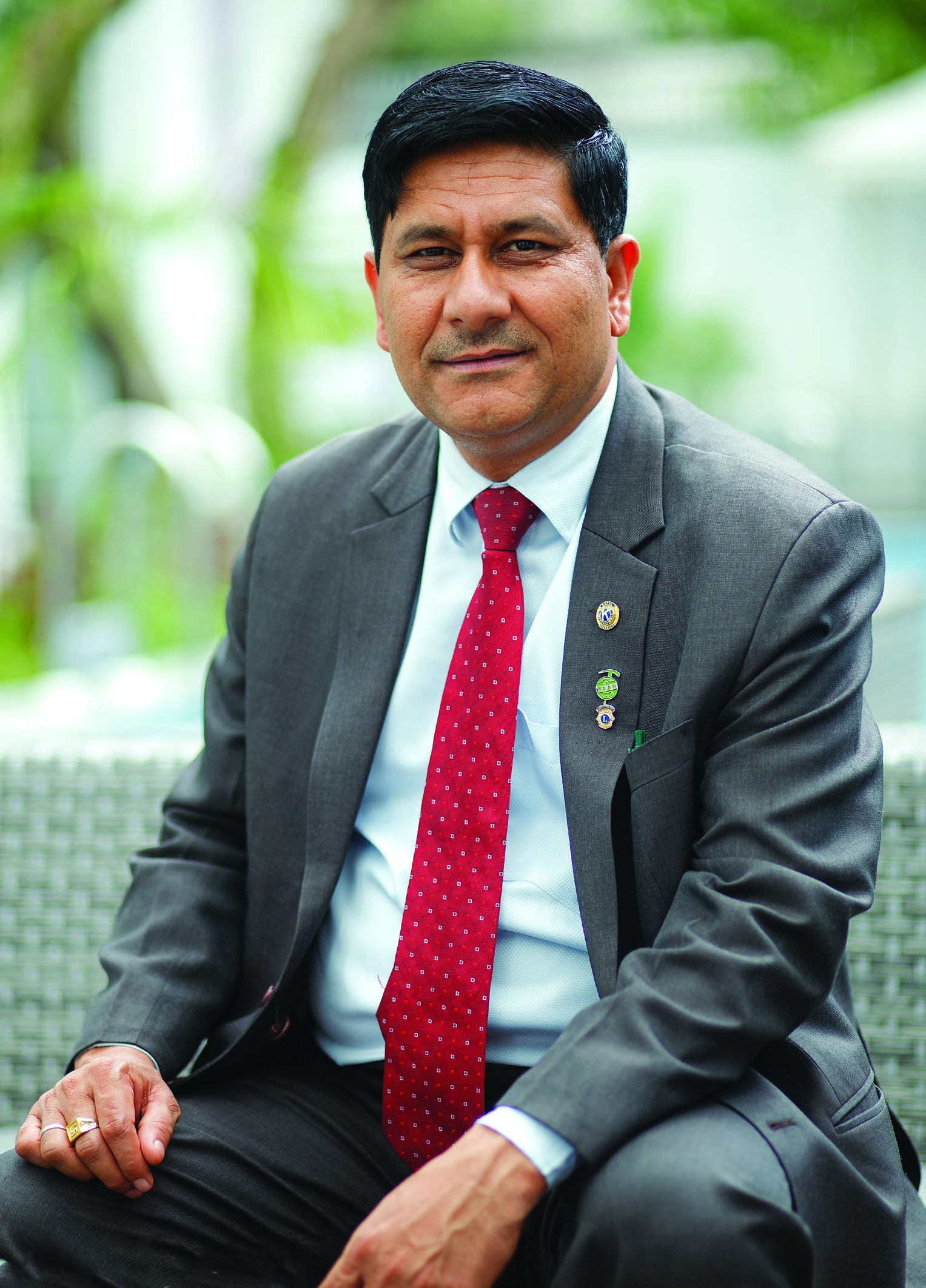
Khum Bahadur Subedi is the recently elected President of Trekking Agencies Association of Nepal (TAAN). Subedi decided to pursue a career in tourism after completing his undergraduate degree in humanities. He worked as a trekking guide from 1994 to 1998. In 1997, he opened Unique Adventure International, a trekking and tour operating company. Subedi has been associated with TAAN as its executive member holding the position of Treasurer from 2009 to 2011.
Dibesh Dangol of B360 met with Subedi after he was appointed TAAN’s President in September to learn about his focus for TAAN and the organisation’s plans for Visit Nepal 2020 and the present situation of trekking and tourism in Nepal. Excerpts:
You are the recently elected President of TAAN. What agenda and manifesto have you set for your term?
Many international tourists go on treks without guides and porters. International trekkers need to take at least a guide and a porter while trekking because guides and porters keep tourists on track as per the itinerary, give trekkers information about the places and ease the whole trekking experience. Without guides and porters, if tourists go independently, various problems may arise. So, my main agenda is to discourage such trekking activities and enforce a rule for foreign trekkers to take at least a guide and a porter while going on treks in Nepal.
Secondly, the current taxation and VAT applied on trekking businesses need to be reviewed, simplified and renewed.
I want TAAN to organise Adventure Travel Mart in partnership with adventure tourism associations and stakeholders to promote Nepal’s adventure destinations internationally. There are many trekking destinations which haven’t been scaled. I want to review, revive and promote those trekking destinations domestically and internationally.
Technology and internet have become an important part of any business and to make the whole Nepali trekking operations tech-friendly, organising and hosting latest IT, technology and digital marketing trainings also fall in my agenda.
To fulfil these, I will be coordinating and working closely with the Government of Nepal, Ministry of Culture Tourism and Civil Aviation, Nepal Tourism Board, various tourism associations, trekking businesses and stakeholders, and travel, trekking and tourism experts.
What do you consider the major reason for your victory at TAAN’s election?
I presented trekking business related issues and agendas that I want to solve. I also run a trekking business and every trekking business would want to uplift their business. National politics is there, but politics should not a dominating factor in organisations like TAAN.
Strengthening and providing facilities to trekking businesses of Nepal were the key highlights of my agendas which is why I think I was able to win the trust and votes of my fellow voters and win the election by 83 votes, which is the highest differential in the history of TAAN’s election.
How would you analyse the present state of the trekking and tourism industry in Nepal?
There are many challenges and problems but they are not just in trekking business but in the overall tourism sector. Having said that, there are also lots of opportunities. Solving the challenges and problems, and grabbing the untouched opportunities are keys to development and prosperity. We have resources and manpower but we need to utilise them in the most effective ways.
One of the problems is unavailability of online visa system because of which tourists have to stand in a queue at the airport and wait for a manual visa. After coming out of the airport, there are no proper transportation facilities. Kathmandu’s pollution is another problem we need to solve quickly along with the availability of hotels in different places and regions of Nepal. When one decides to go for trekking, there are limited flights and seats available. So, additional planes, helicopters and flights are needed.
Besides, there is a dearth of guides fluent in languages other than English.
What are TAAN’s plans for VNY 2020?
We want to celebrate VNY 2020 not just as a tourism campaign but as a festival. TAAN has been actively involved in promoting trekking destinations and businesses as well as the overall tourism of Nepal for this tourism campaign through our national and international associated organisations and agencies. I think Nepal can inbound more than 2 million tourists annually but the lack of infrastructure is letting the country and the tourism industry down.
TAAN is also an associate member of VNY secretariat. We have already presented our issues, plans and concerns related to trekking tourism and business for Visit Nepal 2020 tourism campaign. Hopefully, they will address our plans and concerns soon so that we can work together to develop the trekking and tourism sector of Nepal.
From October 2017, Khumbu Pasang Lhamu Rural Municipality refused to accept Trekking Information Management System (TIMS) cards and started collecting Rs 2,000 as entrance/tourism fees. What were the reasons behind the rural municipality’s refusal of accepting TIMS cards? How has it affected TAAN, NTB and collection of tourism statistics? Apart from Khumbu, have other rural municipalities also gone against accepting TIMS cards?
As far as I know about this situation, I think Khumbu Municipality did so because charging directly to tourists means the money goes directly to them whereas we have a specific way to distribute the TIMS amount.
Because tourists are being forced to pay multiple times; TIMS, Sagarmatha National Park entry fee and Khumbu Municipality entrance fee, it is causing hassles for trekkers who want to explore that region.
One of the motives behind issuing TIMS card is to collect data and have a proper database of trekkers which is being affected by Khumbu Municipality not accepting TIMS cards and collecting money on their own.
Apart from Khumbu, other rural municipalities haven’t gone against accepting TIMS cards. We have requested them not to do so otherwise it would create a huge problem in the trekking and tourism industry of Nepal.
How is TIMS revenue being distributed and utilised?
A mutual agreement was signed between TAAN and NTB regarding distribution and utilisation of TIMS revenue. According to the agreement, the revenue collected from TIMS cards is segregated and shared in three equal parts: the first part is used by NTB for printing TIMS cards, holograms, managing issuing counters and use the remaining amount for tourism marketing, publicity and promotion. The second part of the revenue is for the welfare of trekking workers like medical and accidental insurance policies and conducting rescue operations in case of accidents.
The amount is also used to launch various CSR programs and meet administrative expenses. Promotion, development of infrastructures, conservation and maintaining of trekking trails, exploration of new destinations, and organising training and workshops for sustainable and responsible tourism development are being done by the third part of the revenue.
Any new trekking destinations identified for the future?
We haven’t thought of identifying or promoting any new destinations because we have enough destinations for now which haven’t been promoted effectively. We want to promote those destinations for VNY 2020 campaign and beyond. We have selected 30 destinations and we’ll continue promoting those destinations for now.




.jpg)
.jpg)
.jpg)